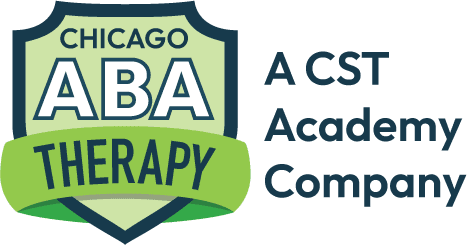In the world of Applied Behavior Analysis (ABA) therapy, treatment plans are crucial for achieving effective and individualized care. These plans serve as the blueprint for addressing specific behavioral challenges and developmental goals of individuals with autism spectrum disorder (ASD) and other developmental conditions. This article will provide a comprehensive overview of treatment plans in ABA therapy, highlighting their importance, components, creation process, and the role they play in achieving successful therapeutic outcomes.
What is a Treatment Plan?
A treatment plan in ABA therapy is a detailed, individualized document that outlines the therapeutic goals, strategies, and interventions designed to address a client’s unique needs. It is developed collaboratively by a team of professionals, including Board Certified Behavior Analysts (BCBAs), therapists, and the client’s caregivers. The treatment plan serves as a roadmap for guiding therapy sessions, tracking progress, and making necessary adjustments to ensure the client’s success.
Importance of Treatment Plans
Individualization
One of the primary benefits of a treatment plan is its emphasis on individualization. Every client is unique, with different strengths, challenges, and goals. A well-crafted treatment plan takes these factors into account, ensuring that the interventions and strategies used are tailored to the client’s specific needs. This personalized approach increases the likelihood of achieving meaningful and lasting progress.
Structure and Consistency
Treatment plans provide structure and consistency to therapy sessions. By clearly outlining the goals, strategies, and timelines, the plan ensures that all team members are on the same page and working towards the same objectives. This consistency is crucial for reinforcing positive behaviors and making steady progress over time.
Progress Tracking
Another essential aspect of treatment plans is their role in tracking progress. The plan includes specific, measurable goals and objectives, allowing therapists to monitor the client’s development and make data-driven decisions. Regular progress reviews help identify areas of improvement and areas that may require additional focus or modification of strategies.
Accountability
Treatment plans also promote accountability among the therapy team and caregivers. By clearly defining roles, responsibilities, and expectations, the plan ensures that everyone involved is committed to supporting the client’s progress. This collaborative approach fosters a sense of shared responsibility and encourages active participation from all stakeholders.
Components of a Treatment Plan
A comprehensive ABA therapy treatment plan typically includes several key components:
Assessment and Diagnosis
The first step in creating a treatment plan is conducting a thorough assessment of the client’s current skills, behaviors, and needs. This assessment may involve direct observation, interviews with caregivers, and standardized assessment tools. The diagnosis of the client’s condition, such as ASD, also plays a critical role in shaping the treatment plan.
Goals and Objectives
Based on the assessment findings, the treatment plan outlines specific, measurable goals and objectives. These goals may address a wide range of areas, including communication, social skills, academic skills, daily living skills, and behavior reduction. Each goal is broken down into smaller, manageable objectives that can be systematically targeted and tracked.
Intervention Strategies
The treatment plan details the intervention strategies and techniques that will be used to achieve the goals and objectives. These strategies may include discrete trial training (DTT), natural environment teaching (NET), pivotal response training (PRT), and other evidence-based ABA techniques. The plan also specifies the frequency and duration of therapy sessions, as well as the settings in which interventions will take place (e.g., home, school, community).
Data Collection and Analysis
Accurate data collection is a cornerstone of ABA therapy. The treatment plan includes detailed instructions on how data will be collected, recorded, and analyzed. This data-driven approach allows therapists to monitor progress, identify trends, and make informed decisions about the effectiveness of interventions.
Caregiver Involvement
The involvement of caregivers is essential for the success of ABA therapy. The treatment plan outlines the role of caregivers in supporting the client’s progress, including strategies for generalizing skills across different environments and maintaining consistency in behavior management. Caregiver training and support are integral components of the plan.
Review and Modification
A treatment plan is not a static document; it is a dynamic, evolving tool that requires regular review and modification. The plan includes a schedule for progress reviews, during which the therapy team assesses the client’s progress, identifies any challenges, and makes necessary adjustments to the goals, strategies, and interventions.
Creating an Effective Treatment Plan
Collaborative Approach
Creating an effective treatment plan requires a collaborative approach that involves input from various stakeholders, including BCBAs, therapists, caregivers, and sometimes the client themselves. This collaborative process ensures that the plan is comprehensive, realistic, and aligned with the client’s needs and preferences.
Evidence-Based Practices
The treatment plan should be grounded in evidence-based practices. This means that the strategies and interventions included in the plan have been scientifically validated and proven to be effective in addressing the specific challenges faced by individuals with ASD and other developmental conditions.
Clear and Measurable Goals
Setting clear and measurable goals is essential for tracking progress and making data-driven decisions. Goals should be specific, attainable, relevant, and time-bound (SMART). Each goal should be accompanied by detailed objectives that outline the steps needed to achieve the desired outcome.
Flexibility and Adaptability
While consistency is important, the treatment plan should also be flexible and adaptable. As the client progresses and their needs change, the plan should be updated to reflect new goals, strategies, and interventions. This flexibility ensures that the plan remains relevant and effective over time.
Regular Review and Feedback
Regular review and feedback are critical for the success of the treatment plan. The therapy team should schedule periodic reviews to assess progress, discuss challenges, and make necessary adjustments. Caregivers should also be encouraged to provide feedback and share observations from different settings.
Conclusion
In ABA therapy, treatment plans play a pivotal role in guiding the therapeutic process and achieving meaningful outcomes for clients with ASD and other developmental conditions. By providing a structured, individualized, and data-driven approach, treatment plans ensure that therapy is effective, consistent, and aligned with the client’s unique needs. Through collaboration, evidence-based practices, and regular review, treatment plans help clients make significant progress and improve their quality of life. Understanding and implementing comprehensive treatment plans is essential for anyone involved in ABA therapy, from professionals to caregivers, to ensure the best possible outcomes for those they serve.








